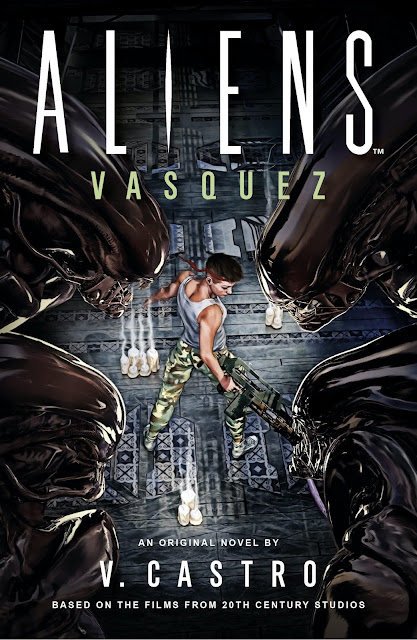Interview of Mercy Tullis-Bukhari by
Xánath Caraza
Who is Mercy Tullis-Bukhari?
I
am a poet, essayist, and fiction writer who is Bronx-bred Afro-Latinx, Honduran
and Garifuna, of Jamaican descent. I am also a Callaloo Fellow, and obtained my
MFA (my second Master's) in Creative Writing from The College of New Rochelle. I
was named one of the “8 Authors Bringing Afro-Latina Stories to the Forefront” by Remezcla magazine
and I was a Pushcart Prize nominee in 2016 for my essay "Black Dolls for
Everyone." I am an English Language Arts high school teacher in the
Southeast Section of The Bronx. Currently I am completing my first novel,
having my third book of poetry edited, while living in New Rochelle, NY with my
two children.
As a child, who guided you through your first readings?
I am the youngest of
seven. My sisters were readers, and would always go to our local library to
borrow books. The Grand Concourse Branch behind Bronx Lebanon Hospital was our
local branch. Whenever any of my sisters went to the library, my mother would
force them to take me along. Being annoyed, they would take me, but would allow
me to wander off in the library while they had their private time.
My father used to get
Archie comic books for me, as well. Every week, we would go to a particular
newsstand in a subway station to get the recent Archie books. I was so young,
that I cannot recall the newsstand or where we came from or where we were
going, but we were always at this particular station. I remember enjoying the
comic book on the way home, then rereading it several times before putting it
aside, anxiously waiting for the next time we would be at that particular train
station for another Archie comic book.
How did you first become a poet?
I used to journal my
thoughts and feelings. Although I was the youngest of seven, the sibling who
was closest to me in age was nine years older than me. My childhood was rather
lonely, so my creativity was what kept me company and occupied my time. In one of
those trips to the library, I borrowed an anthology of poems specifically
geared towards children. I loved the images in the anthology, and the way the
words were put together in a way that was different from a story. Immediately,
I noticed how so much could be communicated in a few words, with connections
that expanded my imagination. In my loneliness, I challenged myself to do the
same, to say what I was feeling and what I was thinking in a concise and
creative way.
What else would you like to share with our readers?
I am a Black woman who
is of Latinx heritage. My children are Honduran-Pakistani-American, Black, with
Muslim names. I speak openly about my experiences as a Black woman, and the
fears I have for my children in this world we live in. I become taken aback
when people immediately dismiss my experiences and fears as generalizations and
paranoia. I am an intelligent woman, an extremely thoughtful individual who was
raised to see people as individuals. We are, physiologically, not different from
each other but as Toni Morrison states, we have all been raced. Because of how
the world is created, especially with our current administration, I am
constantly reminded of my blackness and of my children’s multi-ethnic
background. As a mother with awareness, I feel obligated to inform my children
of the ways of the world while still reminding them to be above ignorance and
value others as individuals. I feel hurt when people who have always been good
to me, whom I have considered my friends, feel hurt by my beliefs, when my
beliefs come specifically from interactions with the world as a Black woman. I
want white people to understand that my art is inspired by my experiences, not
by theirs. I want white people to understand they need to listen to what people
of color are saying about their experiences, without minimizing them. White
people need to accept that slavery lasted 400 years in this country, and the
institution ended--solely through a document--only 160 years ago. The residual
effects of that institution inspires me as a writer and as a mother.
Mercy, thank you for sharing some of your poetry
with La Bloga readers.
La Vida of an African-Latina American
You
speak Spanish?
Let
me hear you speak Spanish.
You
grew up around a lot of Puerto
Ricans, right?
You
Brazilian?
Black
people don’t speak Spanish.
How
is this light-skinned woman your mother?
Pero no saliste como tu mamá.
If
only you had your mother’s skin color.
¡Este
pelo musuco!
Get
a perm to fix your hair.
You
got some good hair…back there. You
should not
have made them into dreds.
You
Cuban?
You
are not Black-Black.
Yo no speak-eh good inglés, pero eres Negra.
Yo no speak-eh espanish to you.
Those
kids don’t look like you.
How
are these light-skinned children yours?
Those
kids must look like their father.
Whose
children are those?
Are
you their nanny?
Are you their babysitter?
Te casaste con un indio, mamita. Mejorasta
la raza.
Mixed
kids are so beautiful.
Mira esa negra.
¿Qué se cree?
Comb
her hair well before you bring
her in this salon.
You
are exotic.
You
are not like other Black women.
Speak
Spanish to me. I won’t understand
you, but, yo…that shit be turnin’ me on.
Teach
your children Spanish.
We
are not really Black.
You
gotta be Dominican, ma.
You
ain’t dark-skinned. You Hispanic;
you got that honey-brown tone.
¿Cómo
conoces las pupusas?
How
did you learn Spanish?
I
don’t want grandchildren with
nappy hair.
You
have pelo liso now.
Bebes café como un indio.
You
are too pretty to be Black.
You
are cute, but not pretty.
Pareces una mona.
No hay nada en esta tienda para ti.
Do
you work here?
¿Cuánto?
Mira mami, ¿tus pelos abajo son como tu pelo arriba?
¡Qué
fea la negra!
You
must be proud of your
light-skinned mother.
Is
all that your hair?
Being
angry must be a cultural thing.
You
won’t go far in life
if you stay natural.
And,
why do you know Spanish?
I Saw Celia
Perform
…at
S.O.B’s with my lover one night—
heard
la habanera sing praises
to
palm leaves waving whispers of a lost homeland,
of
loved negritos bembones being killed,
to
carnavals of life,
of
salacious black girls con
enough
tumbao to make men…
I
listened to Celia’s songs,
knowing
its familiarity but not its words,
telling
my lover,
“Yeah,
Abuelita used to play that song.
Abuelita
told me her cipota stories,
Of
hearing her neighbors say,
Celia está en el pueblo performing,
tenemos
que ir.”
…in
this West Village night club
overflavored
with energy sucking in
other
cipotes from abuelitas who had Celia
LPs
stacked next to the record player
right
under the deviled Jesucristo.
Lifting
and showing just a little leg skin
suavecito
con sabrosura,
I
held on to my lover smiling for Celia’s voice,
emanating
high notes without any pain,
louder
than the band that needed her to
stay
with the tempo.
I
reveled in her trip of Latina-ness,
of
giving position to Spanish speaking
Africans
in the world of limbo-forced ethnic boxes
--I
teared,
inebriated
por que Cuba really estaba libre in this
smoke-filled,
small venue as she waved her regal-colored dress
trimmed
with glittering studs, and finessed a wig
spreading
and shining
like
a sunflower blossoming towards the sun.
My
lover and I talked about AZUCAR! with
missed
dreams of Cuban fantasies trapped in
highballs
of coca, lima y ron, of Latinos
dismissing
the non-Castilliano, of
women
who still can rock a crowd
after
generations of abuelitas and cipotes.
He
held on to me because Cuba was freeing itself
from
my Honduran-Jamaican existence as I sang
“¡No hay que llorar,
La vida es un carnaval¡”
and
I called Abuelita at her home
aware
of the hour difference and said
“Vi la reina, Abuelita.”
Vi La Reina.
La Gringa’s First
Ride to Los Hondos
Esta
gringa flew to Honduras when she was five years old on
the
lie that she was going to meet Mickey Mouse because
esta
gringa could not stop crying while boarding this
monstrous-size
thing that was supposed to stay afloat
high
in the air. We flew from Kennedy Airport into clouds,
then
over pineapple plantations and banana fields, cows
roaming
and campesinos working, sand and beaches con
hondos
strong as the ancestors pleading from
esta grown
gringa to go back. When we landed,
esta gringa asked, Where
is
Mickey Mouse? Because, of course, Mickey Mouse should
be
waiting for esta gringa on the tarmac. Her mami ignored the
question.
She pushed her pass the initial slap of hot humid air,
took
her down the aircraft stairs, walked her across the tarmac
into
the building of the airport. We searched for our suitcases
in
a room where suitcases were thrown at random places on
the
floor. We were like roaches scattering when the light goes
on,
looking for our bags, yelling across the room “encontre una”
when
we found a bag. Mami, slipping a ten dollar US bill
to
the woman who manually checked the suitcases we found,
patted
the top of the tightly packed items of clothes and soaps
and
shoes and more clothes and unknown ducktaped packages
from
Tia Melba y Tia Lorna y Tia Carmen (all of whom were
not really mis tias), for abuelita, fulano y fulano y
fulano. We
had
to return to the airport the following week for one missing
suitcase.
Esta gringa, played futbolito barefooted in the sand
that
was her soil. Within the confused gaze of the neighbors,
esta
gringa swam in the sand granules, and poured buckets of
sand
on her head. Esta gringa washed the sand off her body in
the
big sink behind the house, the same sink her mami used
to
handwash our clothes. Esta gringa chased chickens around
the
house, danced punta, ate la comida of split coconuts, and
heard
her mami yell to curious passerbys con urgullo, “¡Ella
es Gringa! ¡Ciudana Americana!” Esta grown Gringa looks
back at a time
when Gringa status mattered. Esta gringa watched
a
Garifuna man walk to a canoe with a net, come back to shore
with
fish in his net. She watched a Garifuna woman take a fish
from
that net, scrape the scales of that fish, split it open, salt it
and
fried the fish en aceite de coco. Her mami squeezed lime on
the
fried fish and tajadas. Esta gringa, ate
fried fish con tajadas
for
lunch. Gracias a dios, Columbus said, that Honduras saved
his
lost ass from the depths of the storm, y esta gringa was
saved
from a contrived fantasy world of fake-believe dreams
and
its minstrel mouse.













